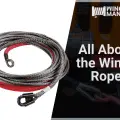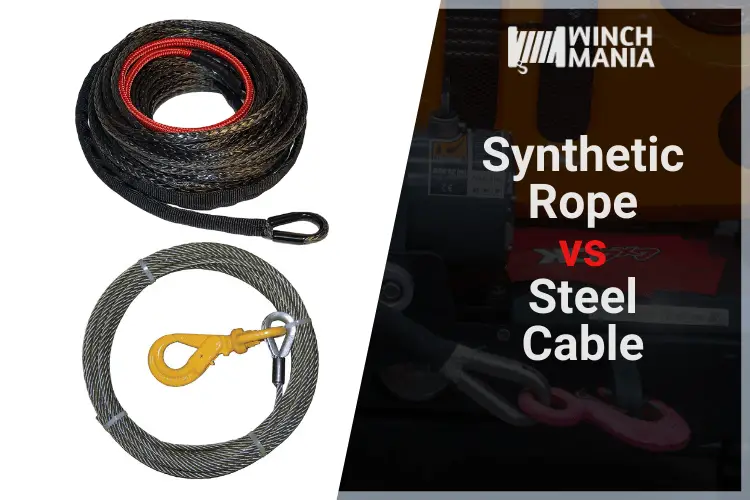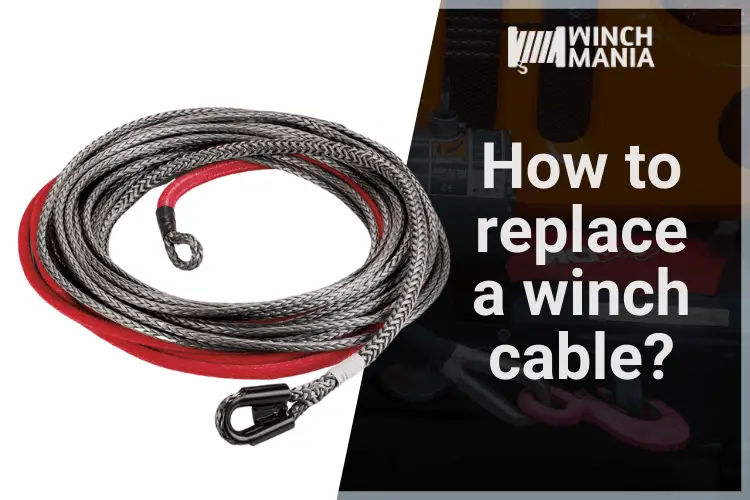Do you use your winch frequently in your job or in a project that you are working on? Then at some point, as with many tools, the winch will eventually get worn out. In the different parts of a winch, the part that gets worn out first is the winch rope. To prepare yourself for such an eventuality, you need to get a winch rope spare. A spare winch rope will come in handy in case your winch rope snaps while towing or in case you need one immediately in your job.
Among the parts of the winch, the rope is disputably the most swiftly degraded. It gets exposed to a lot of harmful elements. It experiences a lot of tension during pulls, and it is exposed to a lot of abrasions.
Now that a replacement winch rope is on order, how will you exactly choose one? How will you choose the correct winch rope size? Which winch rope has the correct diameter and length that is suitable for your winch? These are some questions that you first have to ask yourself before getting a spare or replacement of your winch rope. Getting a spare or a replacement of winch rope isn’t as simple as you think.
When you get yourself a winch rope, consider getting a synthetic winch rope instead of the steel wire cables. We will explain why the synthetic winch ropes are better than the steel wire cables.
At a Glance
Synthetic Rope Vs. Steel Wire Cables
Before we discuss which winch size to get for your winch, we first must know which type of wich rope we are going to get. There are two types of winch cables, steel wire cables, and synthetic rope.
Steel wire cable was the customary winch rope alternative for quite a long time. It is known for its unquestionable sturdiness. It is solid, and it can serve you for quite a long time. Steel wire cables can also withstand the heat generated in the winch drum during the pull.
The steel cable wire has its advantages. Nonetheless, it has its detriments. It is inclined to rusting when exposed to any form of moisture. It also prone to burrs due to abrasion. These burrs are dangerous to your hands, so use some protective gloves when using the winch.
The greatest inconvenience of the steel wire cable has is that it holds a ton of strain during pulls. At the point when it breaks during a force, the unexpectedly delivered pressure it is holding can be risky. The more slender the steel link, the riskier it is. The pressure in a steel wire link during gets can cause some major injuries. Because of these caveats, more people are inclined to purchasing a synthetic winch rope instead of steel wire cables.
Synthetic rope is picking up a great deal of demand nowadays. It has a ton of advantages since makers can incorporate various ropes with various properties, implying that it can practically be “great” for winching.
By and large, manufactured winch ropes can be made to be more durable than steel wire cables. That is astounding since synthetic ropes are much lighter than steel wire cables (something like 70% lighter). Synthetic ropes are also much safer than steel wire cables. They also don’t hold much tension compared to steel wire cables, meaning they won’t snap if they break.
Be that as it may, similar to the steel wire cables, synthetic ropes additionally have their downsides. Synthetic ropes can be more costly than steel wire cables. They are additionally significantly less durable than a steel wire cable. They also are prone to damage by the heat generated by the winch when pulling. This is the reason a ton of synthetic ropes you purchase today have a warmth treated sleeve for insurance.
Each of the winch rope types has its pros and cons, but we generally recommend the synthetic rope winch for safety and since it is also easier to install into the winch. Now, let’s discuss what synthetic winch rope size is for your winch.
What Size Synthetic Winch Rope?
A common misconception by many in getting the winch rope is to get the largest and the lengthiest rope around. This is a hazardous misconception, and this can damage your winch instead. We will explore some vital factors that are important to consider in getting a winch rope.
Getting the largest and the lengthiest rope around is wrong for a couple of reasons. Firstly, it decreases the functionality of the winch. A winch’s rated capacity is actually based on its first winch rope wrap around the winch. By adding more wraps, the more your winch has to work harder to turn.
Another reason why it is wrong is that it damages the winch. When you have an overextended winch rope line, they tend to get bunched up as you spool the winch in. A bunched up winch rope can come in contact with the spreader bars, this will damage both the spreader bars and the winch rope. A longer winch rope line also increases the odds of the winch rope to get entangled with each other, causing them to get stuck.
Since longer winch rope lines are impractical, you should go for a shorter one instead compared to the stock winch rope that is provided together with the winch. For your off-road winching needs when recovering a stuck vehicle, get a winch rope that has a larger diameter and is 15 feet shorter than the stock winch ropes.
As for winch rope line weight capacity, get a winch rope line that has twice the winch pull capacity for safety reasons. Say, for example, you have a 5000lbs winch capacity. Get a winch rope line that has 10000lbs weight capacity. This will ensure that you have a winch rope line that can handle any task that you require it.
Conclusion
Now that you know which winch size to get for your winch, do you have a winch rope in mind to purchase? Or perhaps you have any thoughts or questions on this topic? Feel free to common on them below! We also offer other winching guides such as:



